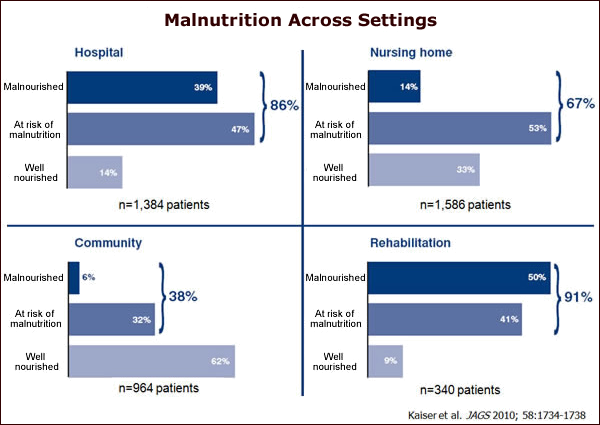The Problem - Malnutrition

World-wide, the elderly population is increasing, and with it, the prevalence of malnutrition. Despite significant medical advances, undernutrition remains a significant and highly prevalent public health problem of developed countries. Estimates of the prevalence vary, as methods for detection are not standardized. However, the prevalence of malnutrition is undeniably high: the overall prevalence is 22.6%. Nearly 40% of hospitalized elderly and 50% of those in rehabilitation facilities are malnourished, and 86% are either malnourished or at risk for malnutrition. Up to 67% of elderly in nursing homes are malnourished or at risk for malnutrition. Of elderly living the community, 38% are malnourished or at risk of malnutrition.
Malnutrition significantly increases morbidity and mortality and compromises the outcomes of other underlying conditions and diseases. Malnutrition may delay recovery and prolong hospitalization, lead to increased susceptibility to infection, impede individuals’ independence and quality of life, and even increase the risk of death in many patients.2, 3
Malnutrition poses a huge economic cost to society. The malnourished elderly are more likely to require health and social services, have more hospitalizations, and cause a burden on caregivers.